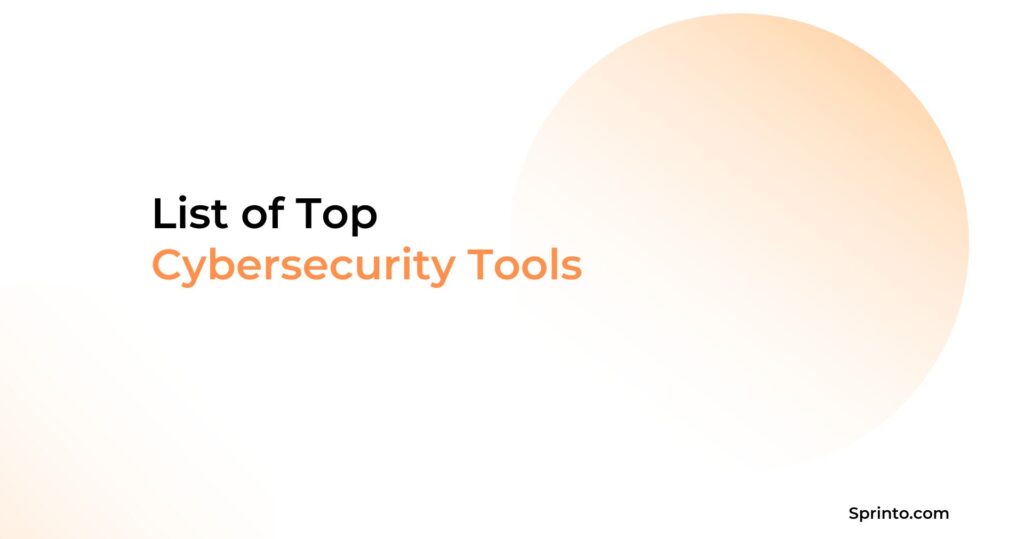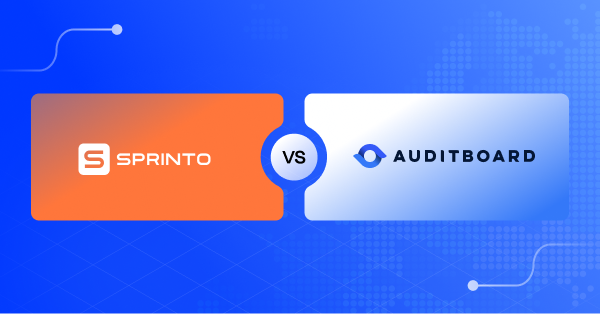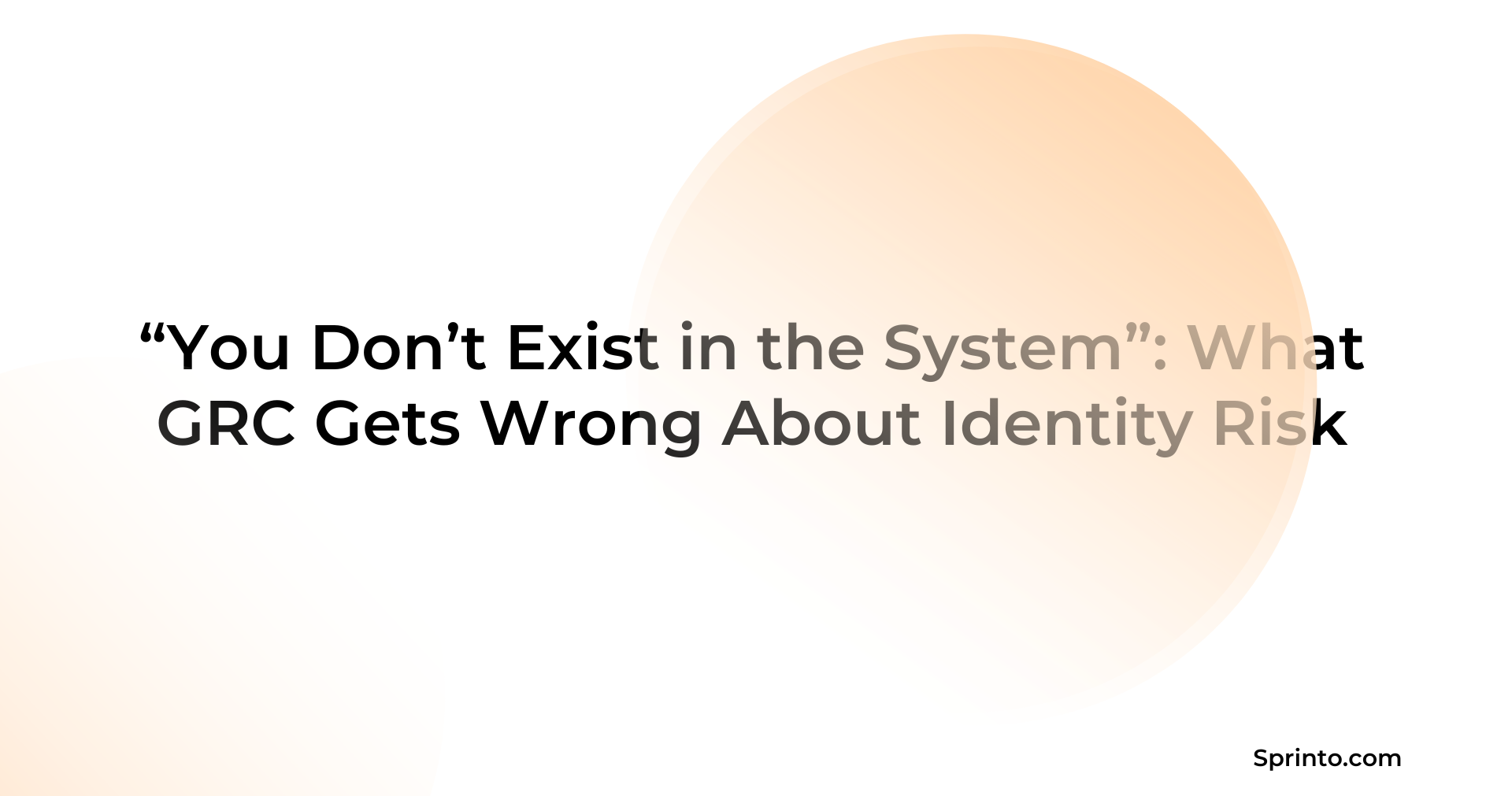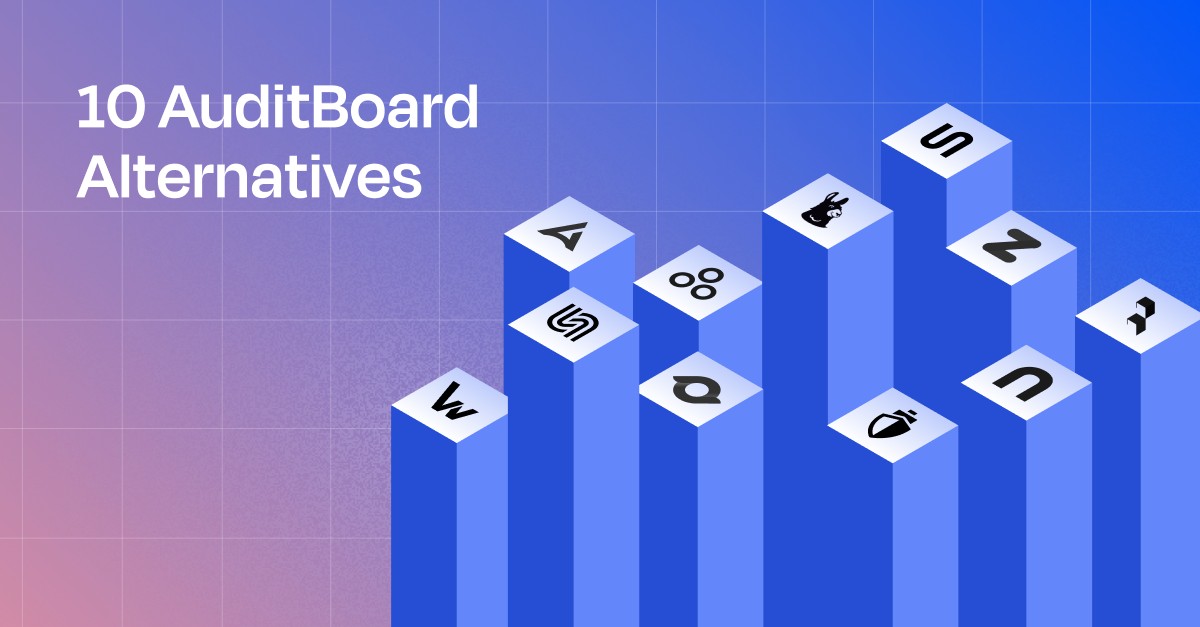Best Risk Assessment Tools for Managing Cyber Risk
Gowsika
Sep 29, 2024
Risk assessment is an activity that helps organizations strengthen their security posture. A well-rounded risk assessment process will help you identify potential risks to your compliance, evaluate risk severity, and minimize their impact on business operations and continuity.
It will require more than assessing risk to streamline your security-strengthening process; your organization must also deploy solutions that help you avert risks effectively.
Fortunately, in 2025, there are multiple risk assessment tools that you can pick and customize specifically for your cybersecurity posture. This blog will elaborate on the top risk management tools in the market today and how each of them can help you manage risks.
What are risk assessment tools?
Risk assessment tools help your company manage current risk instances and minimize future occurrences. Risk assessment tools often come built-in with intelligent predictive analysis capabilities that help organizations with insights that help prepare for possible future risk scenarios.
As a company, you can leverage insights to implement a preemptive progressive plan that strengthens your current posture and improves your defensive capabilities as you scale. Suppose you take a look at the risk assessment tools examples. In that case, they typically start with data-gathering, such as interviews and surveys, to collect information about identified and unidentified risks.
These tools help by internally diagnosing lapses in security, identifying repetitive patterns, and making mitigating adjustments. Hence, the gathered information is analyzed using analytical and statistical techniques to provide business insights.
These insights enable organizations to identify risk trends and patterns, helping them to understand vulnerabilities and plan for effective mitigation strategies.
Top 10 risk assessment tools
The right risk assessment tool can help you quickly spot and deal with potential risks. A few tools also help you smoothen compliance management. They continuously monitor your compliance activities across all frameworks and send alerts whenever desired efficiency parameters are not met.
They also notify stakeholders when new instances that could lead to risk scenarios are detected. The escalation matrix can be customized to trigger alerts based on the severity of the instance.
We’ve talked to our peers to know their experience, analyzed thousands of user reviews, and used a few ourselves to come up with a list of the top 9 risk management software that you can consider for your organization.
Here are the 10 risk assessment tools, explained in details:
1. Sprinto
Sprinto helps in risk assessment in the long term as it comes with built-in advanced risk assessment capabilities. It continuously monitors your business environment to ensure continued security and identify vulnerabilities that could become serious threats. It is one of the best risk assessment tools that you can use to stay ahead of malicious attempts
The main feature that makes Sprinto stand out is its integration with your cloud environments and apps. The tool also helps you predict potential future risk scenarios your systems could face, assess them, recommend remediation plans, and help implement entity-level controls in real time.
Now, let’s take a look at the other features that make it a perfect risk management software.
Features
- Sprinto puts your risk assessment processes on autopilot and allows you to monitor risk controls regularly.
- Manage and document vulnerabilities and endpoint security incidents. You get to promptly track and address potential external threats in your security infrastructure
- Choose from various security awareness training modules tailored to help your organization become security first and meet various compliance requirements
- Seamless auditor-collaboration using Sprinto’s custom Auditor-dashboard
- Sprinto’s compliance solution deploys interoperable security policies, templates, workflows, and framework training modules. This eliminates duplication of effort and reduces costs when organizations wish to demonstrate compliance with multiple frameworks.
Sprinto has a G2 ratings of 4.8 out of 5

Get a Real Time View of Risk
2. LogicManage
LogicManager is a powerful risk management platform that provides organizations with comprehensive solutions for focused and improved risk management processes. It helps streamline the risk management program in a single window for automated and better risk identification, monitoring, and reporting.
The platform also offers risk management consultancy helping organizations ensure business continuity. LogicManager’s risk assessment solution is highly scalable and fits the requirements of both established and growing businesses. This flexibility enables businesses to ensure compliance and stay ahead of the fast-evolving regulations.
Features
- All-in-one centralized hub for streamlining risk management
- Huge risk library to easily detect vulnerabilities
- Automation tools for better risk identification and monitoring
- Robust reporting capabilities with ready-to-use templates
3. Vendor 360
Vendor360 is a flexible third-party risk management solution that helps businesses assess and manage risk associated with vendors. The tool helps you manage vendor selection and onboarding and automates ongoing risk assessments, audits, and monitoring. You can easily gain insights into vendor risk trends with Vendor360’s advanced analytics.
The tool also has built-in industry-standard templates to get started with risk management. Vendor360 is an ideal choice for businesses that require a software solution that allows them to analyze suppliers and vendor operations while minimizing risks and helping them remain compliant with industry regulations.
Features
- Centralized vendor directory to manage all vendor information
- Automation features for risk assessment and monitoring
- Collaboration features to manage risk-related issues with third parties
- Dashboard with access to risk ratings and trends
4. Riskonnect
Riskonnect is a leading integrated risk management platform that emphasizes the importance of interconnected risk management, which is necessary for organizations to respond holistically to emergent risks. It gives the visibility and intelligence to plan for and respond to various risks that can damage the reputation and strategic growth of the business.
Riskonnect helps businesses understand risks from all dimensions for robust decision-making. It provides a centralized cloud platform that facilitates collaboration among different business functions and helps address uncertainties, thus achieving corporate objectives. Riskonnect provides unified reporting across all areas of the organization to identify emerging threats and develop strategies to mitigate them effectively.
Features
- Cloud-based platform with a 360-degree view of risks
- Third-party risk management in a single place
- Compliance management features to manage compliance requirements
- Smart reporting features to create audit-ready reports
5. OneTrust
OneTrust offers an IT & Security Risk Management solution that provides a comprehensive, integrated platform allowing businesses to monitor their operations and generates contextual reports that provide crucial insights into the organization’s risk profile.
The software’s contextual reporting feature helps organizations understand their risk management posture and stay ahead of any potential threats. The platform also offers advanced visualization tools to effectively analyze data and make better-informed decisions related to risk mitigations.
Features
- Automated tools to automate key risk activities
- Customized for different frameworks/standards
- Pre-built customizable templates for risk management
- Visual risk analysis dashboard to spot key risk indicators
6. Risk Management Studio
Comprehensive Risk Monitoring & Mitigation
Risk Management Studio is one of the most used risk management applications. It allows businesses to effectively manage potential risks and threats across different systems. The tool helps in identifying, assessing, and mitigating the risks in a centralized environment.
The software is ISO 27001 certified and has one of the largest threat libraries. Its one-incident and claim data repository enables businesses to track and manage events plus claims more efficiently. It also helps in monitoring and keeping up with compliance requirements. Therefore risks can be reduced, and compliance responsibilities can be addressed seamlessly.
Features
- Integrated risk management framework to meet business objectives
- AI-powered data discovery technology to identify and assess risks
- Collaboration tools to manage risks in a collective manner
- Comprehensive compliance management features
7. Quantivate
Quantivate is a great enterprise-level risk management solution to assess and address potential risks across your organization. It has really organized collaboration features that ensure access to stakeholders and enable you to stay up-to-date on risk profiles and risk management strategies.
The integrated GRC (Governance, Risk, and Compliance) management system enables businesses to manage their compliance tasks while minimizing risks associated with non-compliance.
Quantivate has built-in best practices based on industry standards and regulations and intuitive reporting features that give users detailed insights into their operations. With its automated processes for analyzing data, it facilitates faster decision-making by providing companies with accurate and timely information about potential threats.
Features
- Risk management features to improve transparency and risk awareness
- Data-driven ERM program to make smarter decisions
- Centralized risk management processes across the organization
- Enterprise-level risk reporting features
Comprehensive Risk Monitoring & Mitigation
8. Auditboard
AuditBoard is a popular and power-packed risk management software that helps organizations efficiently monitor and manage risks. It helps businesses identify potential risks and their impact on business activities so that they can mitigate the risks.
The unified risk assessment helps users collaborate to stay ahead of the risk curve. The software helps in timely constant monitoring and identifying the risks so that businesses can take the necessary steps to avoid data breaches and security threats.
Auditboard allows you to streamline the risk management program by automating various processes. Further, businesses can also check automated reports to gain visibility into risk trends for strategizing accordingly.
Features
- Useful risk metrics and insights to understand risk trends
- Automation tools for risk assessment and real-time risk monitoring
- Centralized dashboard to drive mitigation plans effectively
- Automated reports with featured risks and trends
9. Resolver
Resolver’s IT Risk Management solution enables businesses to manage risk profiles in a single, centralized platform. It allows organizations to collect all risk data points and analyze them in context— revealing the true business impact of every risk.
Resolver provides users with excellent tools that help them rank risks by impact, including advanced visualizations that enable immediate assessment of risk severity and actionable insights for making informed decisions on where to focus resources for maximum effectiveness.
Furthermore, this tool can help you track changes over time to proactively address any potential threats or weaknesses before they become too severe or costly. And can help businesses stay ahead of the curve when managing IT security and compliance.
Features
- Automated workflows to save time and resources
- One-click access to historical data and risk trends
- Customizable risk management dashboard to implement your approach
- Automated reports to turn data into valuable business insights
10. Rsam
Rsam is a cloud-based GRC software platform that provides various tools and solutions for risk assessment, incident management, and regulatory compliance management. It helps organizations to keep their systems secure, compliant, and functioning optimally by providing automated insight into business risks and threats. Rsam makes it easy to identify potential security issues, prioritize them based on their severity, and define appropriate mitigation plans.
Regarding incident management, Rsam provides comprehensive tools for responding swiftly and effectively to threats. It enables users to quickly evaluate the impact of various events on the organization’s operations, allowing them to implement appropriate measures or strategies rapidly. Also, the platform enables users to compare risk scenarios side-by-side for more informed decision-making.
Features
- Comprehensive risk library for efficient risk management
- Continuous and automated risk evaluation plus monitoring
- Customizable storyboards and one-click reports for easy communication
- Advanced analytics to identify risk patterns and predict threats
Also check out: Guide on IT Risk management framework
How to select the right risk assessment software?
Picking the right risk assessment tool is more than just a checkbox item, isn’t it? The tool you pick can influence your organization’s security posture, determine how sensitive data is protected, and show the world the impetus you give to security practices.
While these are all important, it’s always better if the tool you pick is built to scale. Making this decision can be daunting, especially with all these options.
To help you out, we’ve outlined 4 key factors that today’s best risk assessment tools have. You can use these factors as your baseline evaluation criteria. Let’s get started
Determine what you need from the tool
Start by understanding what your organization truly needs from risk management. This will guide you in pinpointing the features and abilities your software needs.
For example, if you manage risks across various projects, use software with strong project management features. If automating risk assessments is a priority, choose a centralized platform with advanced algorithms and data analysis capabilities.
Consider your budget
Keep in mind that going for the cheapest option isn’t wise, but it’s also unwise to go into debt for top-tier software. Talk to other organizations that mimic a similar organizational structure and get feedback on the tools that worked well for them and the ones they would never use again.
Pro tip: If you assess the cost, consider other factors like technical support and the software’s potential for frequent updates. These key elements are necessary for using the assessment software to be cost-effective and efficient.
Check for integration
Now, integrations are the main feature you need to look out for in your tool. Integration capabilities of the risk assessment tool will determine the TAT for its implementation and operational efficiency.
Ideally, it should work well with your project management, compliance, and quality assurance tools. This way, it becomes a part of your existing workflow and gives you a complete view of risks across your company’s assets.
Request references and a trial
Before purchasing, it’s wise to ask for references and try the software. Try to request customer references and hear about their experiences.
You could, however, opt for a vendor that provides a demo or trial period for you to test out the software and explore its capabilities, thus enabling you to make a confident purchase decision.
Overall, selecting the right risk management software might be challenging, but by following these steps, you can pinpoint the solutions that fit your company’s requirements and shortlist the ones that fit well in terms of features and price.
5 Benefits of Risk Assessment Tools
Risk assessment tools have several crucial advantages for businesses trying to strengthen their security posture. Some of the benefits are listed below:

Greater visibility
Risk assessment tools give users a better understanding of potential risks. This includes giving the company comprehensive data so they can evaluate the possible effects of various occurrences, identify flaws and prioritize threats according to their seriousness. This helps organizations to be better prepared for how appropriately they can respond to risks and make better-informed decisions.
Improved compliance
Risk assessment tools significantly help companies adhere to industry rules by giving them a clear visibility of security flaws. With this knowledge, businesses can rapidly identify areas of improvement and create plans to satisfy legal requirements. In addition, it ensures sensitive customer data is effectively safeguarded and aids organizations in maintaining compliance.
Time management
By automating the risk assessment process, businesses can save significant time and effort when conducting regular reviews or responding to incidents. In addition, risk assessment tools streamline workflows by providing users with auditable records and real-time dashboards that allow them to track progress over time while ensuring compliance with internal policies and external regulations. This helps organizations stay ahead of emerging threats while reducing administrative overhead.
Cost saving
Investing in a risk assessment tool can save money in the long run by helping organizations avoid costly penalties or fines due to non-compliance or security breaches that could have been avoided through proper measures taken earlier on. Also, many risk assessment solutions offer flexible pricing plans tailored toward different business sizes so that companies can align their budgeting requirements with their specific needs.
Enhanced collaboration
Risk assessment tools foster collaboration between different teams within an organization by allowing users from various departments – such as IT Security, Legal & Compliance, and Human Resources – to coordinate efforts around managing risk scenarios more efficiently. In addition, they provide unified workflows for sharing critical information across organizational boundaries so that everyone is working on the same page regarding understanding and mitigating various risks associated with operations.
Get ahead of security incidents by automating threat detection
Conclusion
Risk assessment tools are essential for businesses of any size to stay compliant with industry regulations and protect their systems from malicious actors. By leveraging these tools, organizations can gain insights into the potential risks and how best to mitigate them while saving time and money.
The nine risk assessment solutions we’ve highlighted offer features that help improve visibility, streamline workflows, foster collaboration between different teams within an organization, and more.
Risk assessment is part of a bigger security and compliance conversation. And, a compliance automation solution like Sprinto helps you create a strong risk assessment mechanism while helping you swiftly expedite audit-readiness.
FAQs
Why is risk assessment important?
Risk assessment is important for any business to identify the potential risks, analyze their impact on business activities, and be ready with effective solutions to mitigate those risks.
What is qualitative risk assessment?
Qualitative risk assessment or analysis is a process that involves identifying potential risks/threats and how likely they are to happen. They are typically used to understand the probability and severity of different risks and to identify areas that may need additional attention from a risk management perspective.
This assessment involves looking at factors such as culture & environment, operational processes & policies, external or internal threats, etc., to determine potential risks.
What is quantitative risk assessment?
Quantitative risk assessment or analysis is a systematic risk analysis technique for quantifying the risks associated with certain operations. This process heavily relies on data to analyze the impact of risks so that businesses can take the necessary actions.
What is the most common risk assessment method?
A Risk Heat Map is one of the most common risk assessment tools used today. A Risk Heat Map is a visual representation of an organization’s risk profile that uses color coding to indicate the relative likelihood and potential impact of different types of risks. It helps organizations quickly identify areas of high risk, prioritize steps for mitigating those risks, and track progress over time.
What is compliance cybersecurity?
Compliance with cybersecurity refers to the process where you ensure that your company is in line with the cybersecurity regulations, laws, and standards. The type of compliance you need to adhere to can be different depending on the type of business you do.
What is the role of compliance in security?
Compliance in cybersecurity is an important reporting function that shows how to meet prescribed industry regulations and adhere to regulatory requirements. Compliance is a part of an organization’s security journey and is often used as a roadmap to bolster security processes and improve them consistently.


Use Sprinto to centralize security compliance management – so nothing
gets in the way of your moving up and winning big.





















